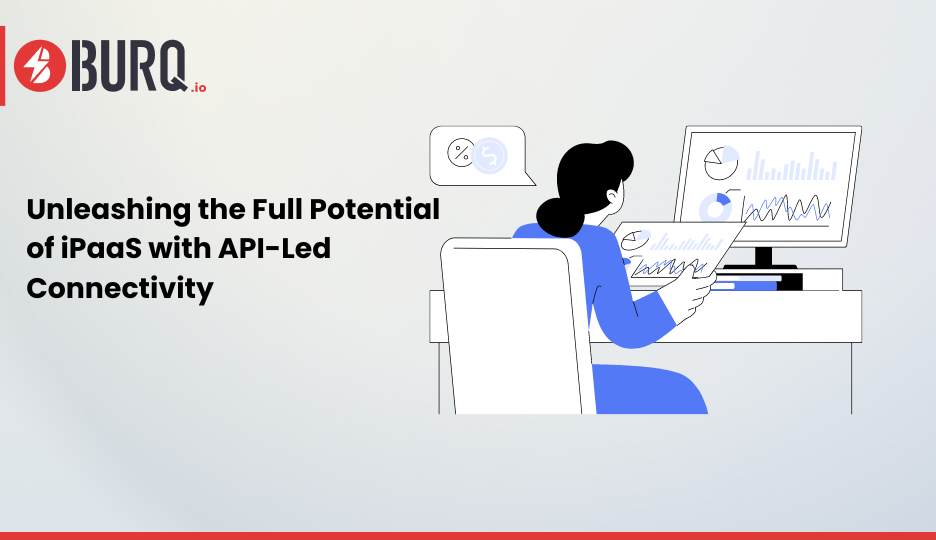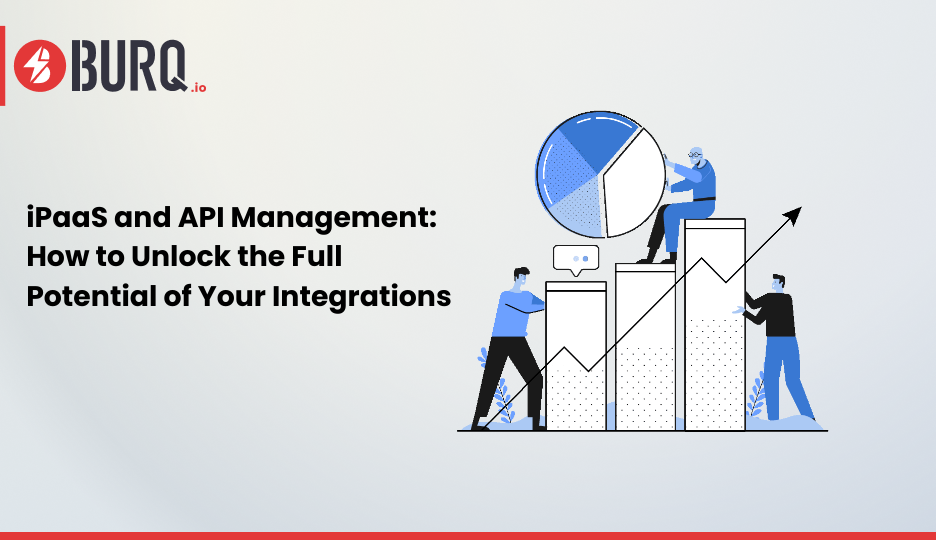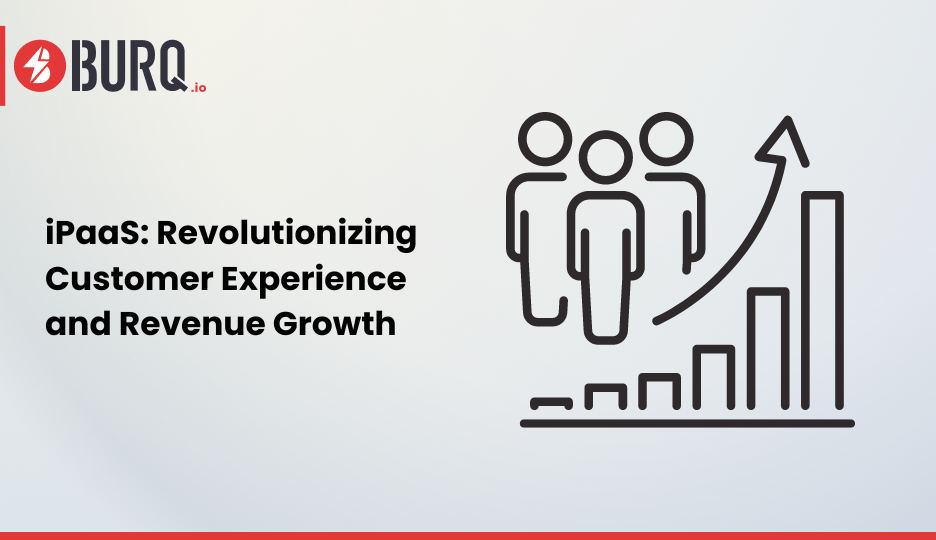In the rapidly evolving digital landscape, businesses need integration platforms that are not just robust and reliable, but also agile enough to keep up with the constant stream of data and applications. Enter iPaaS – Integration Platform as a Service, a cloud-based solution that has transformed the way organizations approach their integration needs. With iPaaS, businesses can connect disparate systems and applications with ease, facilitating the seamless transfer of data.
But, as powerful as iPaaS is, it truly unleashes its full potential when combined with API-led connectivity. This integration model, based on the use of Application Programming Interfaces to create connections between different systems, isn’t just a buzzword – it’s a game-changer in the world of digital integration.
This detailed guide will give you an idea of the iPaaS and API connectivity and exploration of how this can drive value, enhance business processes and take integration on the new era.
Understanding iPaaS and API-Led Connectivity
Before we explore their synergy, it’s crucial to first understand individual concepts of iPaaS and API-Led Connectivity.
iPaaS platforms act as the central nervous system of a business’s digital integrations, providing a unified platform in the cloud that supports various integration scenarios. These include application-to-application, business-to-business, cloud services, and many more. iPaaS eliminates the need for costly, on-premise middleware, offering a scalable, pay-as-you-go service model.
Businesses turn to iPaaS for several reasons, including its ability to reduce the complex procedures of integrating applications, its support for hybrid cloud environments, and the fact that it can be implemented with little to no IT investment—thanks to the nature of cloud services.
API-led connectivity is a methodical way to connect data to applications through reusable and purposeful APIs. It’s not just about making data available from one application to another, but about doing so in a way that provides value to the application developer and the end-user through improved business processes.
This approach is structured around three levels or ‘tiers’: system, process, and experience. Each tier involves APIs that offer different functionalities and levels of abstraction, facilitating both internal and external integrations.
API-Led Connectivity
- System APIs provide access to core enterprise systems of record.
- Process APIs expose business processes for reuse and efficiency.
- Experience APIs deliver connected user experiences across channels and devices.
Dissecting Misunderstandings about API-Led Connectivity
There’s a common misconception that API-led connectivity is exclusively an IT strategy. The reality is that it’s a business strategy, one that aligns business and IT in their aim towards creating value. It’s not just about the technology; it’s about organizational change and the adoption of new mindsets.
The Significance of API-Led Connectivity in iPaaS
When API-led connectivity meets iPaaS, the result is a comprehensive strategy for adapting to the modern digital business landscape. This integration approach transforms iPaaS into a system that can handle not just integration, but also data sharing in a strategic and intelligent manner.
A More Flexible and Scalable Approach
API-led connectivity allows for a more modular way of building integrations, making it easier to scale and adapt as business requirements change. It also promotes greater agility and reduces complexity in managing integrations across the enterprise.
Enhanced Data Flow and Management
With API-led connectivity, data flows through the enterprise in a controlled, secure, and efficient manner. It provides a single point of access to all data, and via APIs, data can be maintained, access-controlled, and analyzed, ensuring data-driven decisions have solid, reliable foundations.
API-led connectivity enables real-time data synchronization across all connected applications and systems, avoiding data silos and ensuring information is always current and available to those that need it most.
Advanced Security and Governance
iPaaS with API-led connectivity architecture ensures that data connections and integrations are secure and comply with governance policies. It allows for granular control over who can access what data, and in what contexts, providing peace of mind in your data management.
Core Components of API-Led Connectivity
To fully harness the force of API-led connectivity within an iPaaS environment, you need the right tools and components.
The core components of an API-led ecosystem within iPaaS include API gateways, developer portals, and API management tools. These assets are pivotal in ensuring your iPaaS strategy is underpinned by a robust API-led architecture.
A key success factor in API-led strategies is the experience of the developers using the APIs. Providing a rich, intuitive environment for developers is crucial, as it encourages innovation, rapid integration, and the propagation of best practices.
The Role of API Management Tools
API management tools simplify the process of creating, deploying, and managing APIs. They provide a central location for monitoring API usage, managing access, and updating API versions – all vital functions within an iPaaS environment.
Strategic Advantages of API-Led iPaaS Integration
Lorem ipsum dolor sit amet, consectetur adipiscing elit. Ut elit tellus, luctus nec ullamcorper mattis, pulvinar dapibus leo.
The benefits of combining API-led connectivity with iPaaS extend beyond streamlined IT operations, offering strategic advantages that can directly influence the bottom line.
Speed to Market and Competitive Advantage
With API-led connectivity, businesses can bring new applications and services to market faster, giving them a competitive edge. This acceleration of the product lifecycle can significantly impact product adoption in fast-moving markets.
Improved Customer Experience
In an API-led environment, customer experiences are more personalized, consistent, and accessible. APIs enable businesses to create a network of experiences that cater to diverse customer needs, resulting in a more profound and long-lasting relationship.
Seamless Partner Integrations
API-led connectivity simplifies the process of onboarding and integrating external partners. This means more efficient supply chain management, smoother business-to-business transactions, and ultimately, a healthier ecosystem of partnerships.
Implementing API-Led Connectivity with iPaaS
It’s one thing to understand the theory, but successfully implementing API-led connectivity within an iPaaS solution is where the real value lies.
Step-by-Step Guide to Integration
The first step is to define your integration objectives clearly. Identify the systems and applications that need to be connected and determine the best strategies for these connections.
Next, set up your iPaaS environment to support an API-led approach. Ensuring that the iPaaS solution you choose is compatible with API-led practices is key.
It’s also vital to align your business and IT teams. A collaborative approach will solidify the understanding of how API-led connectivity can drive value for different departments and stakeholder groups.
Best Practices for Deployment
Deploying API-led iPaaS is a complex process that requires diligence and strategic foresight. Best practices include piloting small integration projects to test the waters, employing an iterative approach to development, and ensuring a robust governance structure is in place.
Real World Examples
Learning from those who have already successfully integrated iPaaS with API-led connectivity can provide valuable insights.
A global retailer adopted an iPaaS solution enhanced with API-led connectivity to synchronize inventory, ordering, and shipping processes across its online and offline channels. The result was an enhanced customer experience and improved operational efficiency.
When a financial services firm integrated a fintech’s services through API-led connectivity within its existing iPaaS setup, it was able to launch innovative new products and services that previously were not possible due to integration barriers.
Overcoming Challenges in API-Led iPaaS Integration
Integrating API-led connectivity with iPaaS isn’t without its challenges. It requires a thoughtful approach and a commitment to overcoming obstacles.
The Legacy System Conundrum
Many businesses struggle with the integration of older legacy systems. It’s essential to develop a strategy that respects these systems while pushing forward with modernization and integration efforts.
API-led connectivity requires a shift in both IT and business cultures. Employees may need to adopt a more agile mindset and consider how their work contributes to the wider API strategy.
Conclusion
The coming together of iPaaS and API-led connectivity is not just the next phase of enterprise integration—it’s the foundation of a digital future where businesses thrive on innovation, connectedness, and agility.
API-led iPaaS is paving the way for a new era of business where customer-centricity is not just a goal, but a reality. It’s about turning integration from a challenge into an opportunity and about allowing businesses to evolve continuously in an increasingly digital world.
In closing, the true value of API-led iPaaS is still being uncovered. However, one thing is clear—businesses that fail to harness the potential of this combined powerhouse may find themselves stuck in the integration past, while their more agile competitors forge ahead.
If your business is looking to take advantage of the benefits that API-led iPaaS can offer, it’s crucial to start exploring your options.
Get in touch with integration solution providers, and conduct a thorough assessment of your business needs. Remember, the key to successful API-led integration lies in understanding the unique requirements and nuances of your organization. Make the call, and take the first step towards unleashing your iPaaS’s full potential with API-led connectivity.
Unleash the potential of your digital ecosystems with API-led connectivity within your iPaaS solution. Revolutionize your business processes, streamline your IT operations, and lead the charge in your industry’s digital transformation race. The future is now, and it’s API-led.





